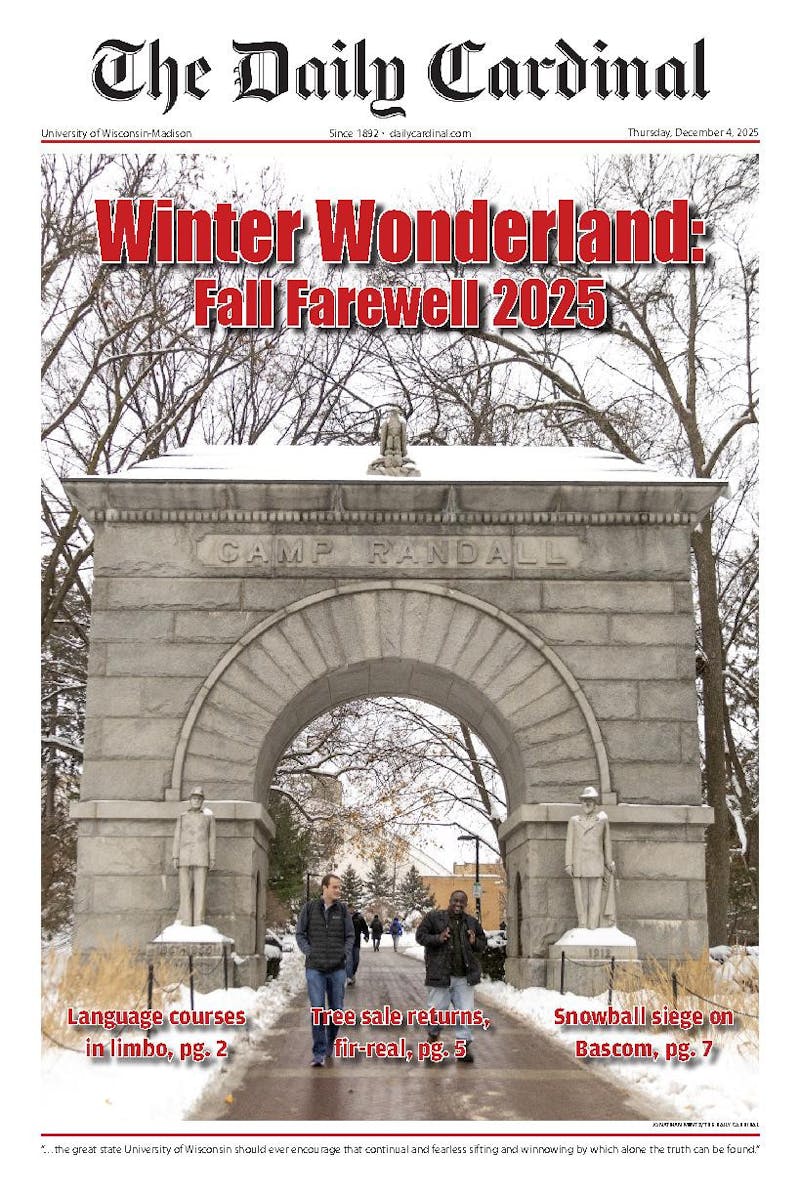The “Hmong Diaspora in Tapestry” exhibition at the Overture Center, showcasing a collection of woven and embroidered Hmong story cloths, offers a window into Hmong history and resilience.
As part of The Hmong Institute’s 50th anniversary activities commemorating the Hmong diaspora, the textile artworks document the lived experiences and stories of Hmong refugees, particularly those from the Ban Vinai refugee camp in Thailand.
Embroidered story cloths are a contemporary textile form Hmong refugees developed in Thai refugee camps. They’re used to tell Hmong legends and history as well as document Vietnam War stories, changing Hmong oral traditions into visual narratives.
Wisconsin has the third-largest Hmong population in the United States, with more than 58,000 Hmong residents. With 12,566 residents, Milwaukee County has the largest Hmong population in the state, followed by Marathon (6,414) and Dane (5,901) counties.
Mai Zong Vue, Chief Operating Officer at The Hmong Institute, told The Daily Cardinal that when the Hmong were “marked for extinction” in Laos for their support of the U.S. during the Vietnam War, they continued to do needlework not just to sell for income but also to prevent themselves from “going crazy” in refugee camps.
“The exhibit is to showcase the refugee era, where people are going through a lot of emotions, a lot of suffering and enduring the pains are happening in the camps,” Vue said, adding the story cloths tell stories of “survival” about Hmong history from China to Laos, the Vietnam War, the crossing of the Mekong River, becoming refugees and waiting in camps for resettlement opportunities.
Story cloths derive from Paj Ntaub, meaning “flower cloth,” which refers to the traditional Hmong textile art of embroidery, batik and reverse-appliqué used to decorate cloth for clothing.
To create story cloths, Hmong textile artists commonly use a quilting method called appliqué which involves stitching smaller pieces of fabric on top of a larger piece of fabric. Paj Ntaub techniques utilize both appliqué and reverse-appliqué — a method that involves cutting out a design on a piece of fabric where the raw edges are turned under and stitched onto another piece of fabric — to create intricate designs.
Hmong story cloths often serve as a primary source that connects the diasporic Hmong community to its past, preserving the complex history of the Hmong people and the memories of what was lost to war.
Vue emphasized the importance of The Hmong Institute’s work in preserving the history of the Hmong people and how understanding the past informs the present.
“Our hope is that this is a foundation for the Hmong community,” she said. “For those who are interested in our heritage, there’ll be a place for them to come and dig out information about who the Hmong people are and why they’re here.”
The Exhibition Reception for “Hmong Diaspora in Tapestry” will be held on Friday, May 9 at the Overture Center. The exhibition will be on display in the Playhouse Gallery through June 1.
Anna Kleiber is a former state news editor and arts editor for The Daily Cardinal. She has written in-depth on elections, legislative maps and campus news, and lead reporting on the fall presidential election. Anna will spend the summer as the 2025 Sharon Stark political reporting intern with the Milwaukee Journal Sentinel. She has previously interned with WisPolitics and Madison Magazine. Follow her on X @annakleiber03.






